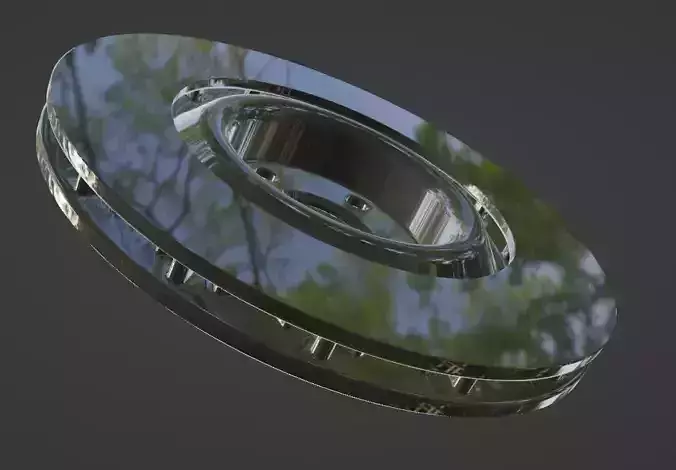1/6
v A wheel disk, often referred to as a wheel rim or wheel, is a crucial component of a vehicle's wheel assembly. It is the outer circular part of the wheel onto which the tire is mounted. Here are some key aspects of a wheel disk:
Material: Wheel disks are commonly made from materials such as steel, aluminum alloy, or a combination of materials. The choice of material can impact the wheel's weight, strength, and appearance.
Design: Wheel disks come in various designs and styles, ranging from simple and functional to elaborate and decorative. The design can affect the overall aesthetics of the vehicle.
Size: Wheels come in different sizes, typically measured in inches. The size includes the diameter of the wheel and the width of the wheel. The size of the wheel can impact the vehicle's handling and ride characteristics.
Mounting: The wheel disk is designed to securely hold the tire in place. It usually has a bead seat where the tire bead sits, and the wheel is mounted onto the vehicle's axle using lug nuts or bolts.
Finish: Wheel disks can have various finishes, such as polished, painted, or coated to protect against corrosion. The finish not only contributes to the overall aesthetics but also helps protect the wheel from environmental elements.
Offset and Backspacing: These are important measurements that determine how the wheel sits in relation to the vehicle's suspension and body. They affect the wheel's position within the wheel well.
Bolt Pattern: The bolt pattern refers to the number and arrangement of bolt holes on the wheel. It must match the bolt pattern of the vehicle's hub for proper fitment.
When choosing or describing a wheel disk, it's important to consider these factors to ensure compatibility with the vehicle and achieve the desired look and performance.
Disc (Rotor): The disc, often called the rotor, is a flat, circular metal component mounted to the vehicle's wheel hub. When the brake pedal is pressed, brake calipers squeeze brake pads against the disc to create friction and slow down or stop the vehicle.
Caliper: Brake calipers are components that house the brake pads. When the brake pedal is activated, the calipers apply pressure to the brake pads, causing them to make contact with the rotating disc.
Brake Pads: Brake pads are friction materials attached to the caliper. They come into contact with the rotating disc when the brakes are applied, creating the necessary friction to slow down or stop the vehicle.
Brake Fluid: Brake fluid is essential for transmitting the force from the brake pedal to the brake calipers. It also plays a role in heat dissipation within the braking system.
Brake Lines: Brake lines carry brake fluid from the master cylinder to the brake calipers. Proper maintenance of brake lines is crucial for the overall effectiveness of the braking system.
Master Cylinder: The master cylinder is a key component that converts the mechanical force from the brake pedal into hydraulic pressure, sending brake fluid to the calipers.
Anti-lock Braking System (ABS): Many modern vehicles are equipped with ABS, which helps prevent wheel lock-up during hard braking, improving overall control and safety.
Ventilation: Some high-performance brake discs have ventilation features, such as drilled holes or slots, to dissipate heat more efficiently and reduce the risk of brake fade.Circular metal part on the wheel hub; brake pads press against it to slow down the vehicle.Houses brake pads; applies pressure to them when the brake pedal is pressed.Friction materials on the caliper; make contact with the disc to create the necessary friction for braking. Carry brake fluid from the master cylinder to the calipers.Transmits force from the brake pedal to the calipers and aids in heat dissipation.Converts mechanical force from the brake pedal into hydraulic pressure.Helps prevent wheel lock-up during hard braking for improved control.Some discs have features to dissipate heat efficiently, reducing the risk of brake fade.
REVIEWS & COMMENTS
accuracy, and usability.






